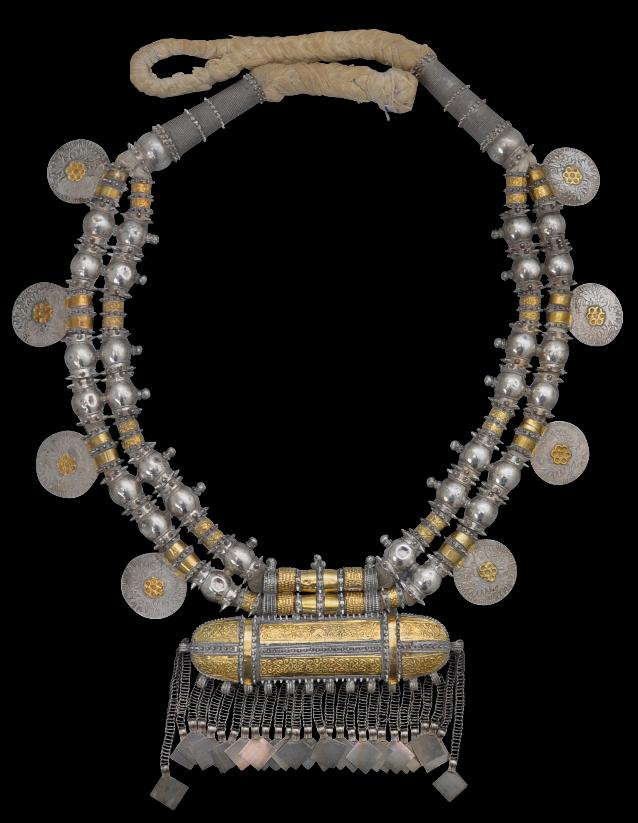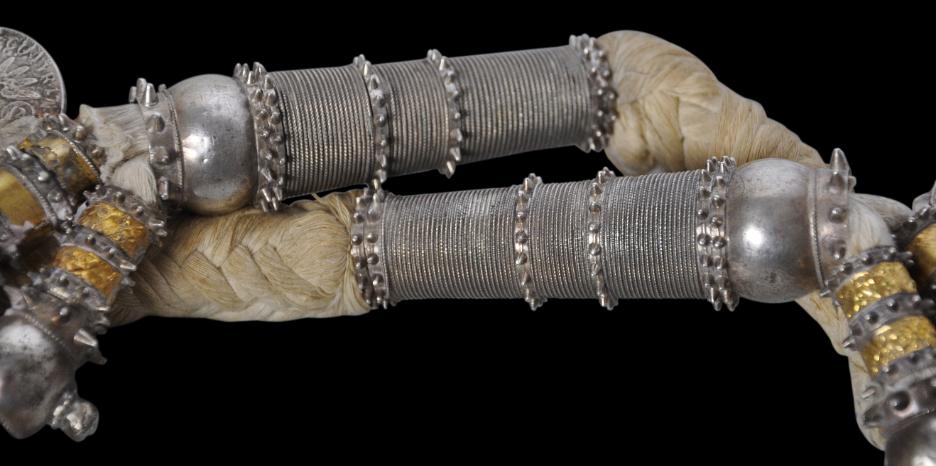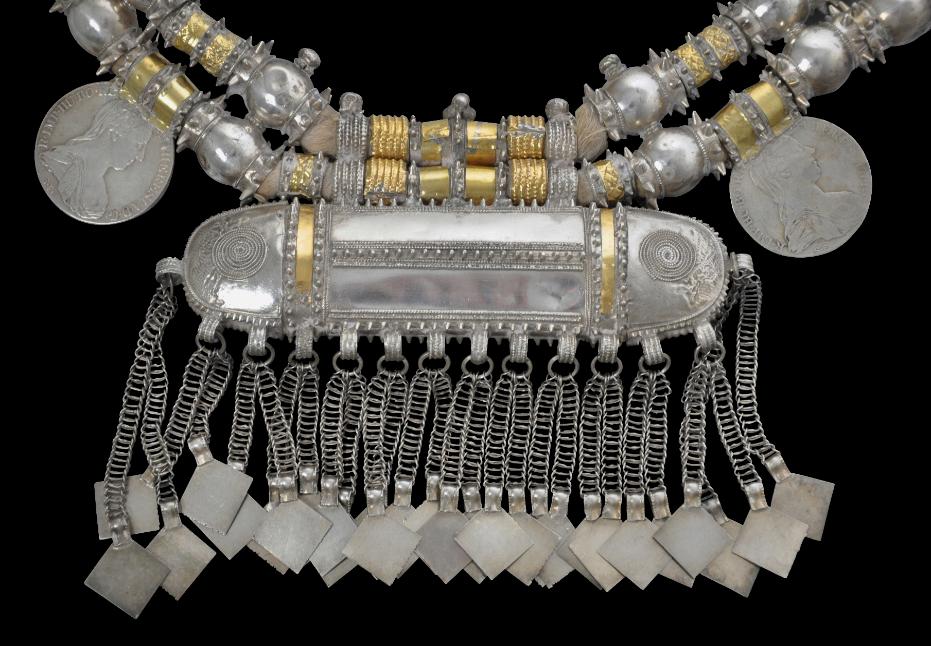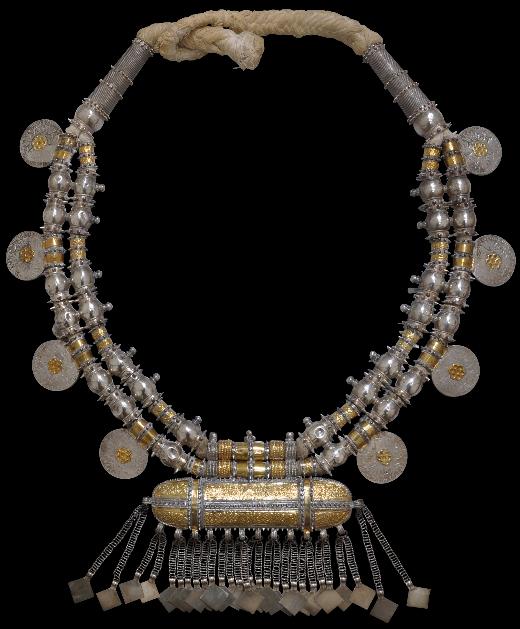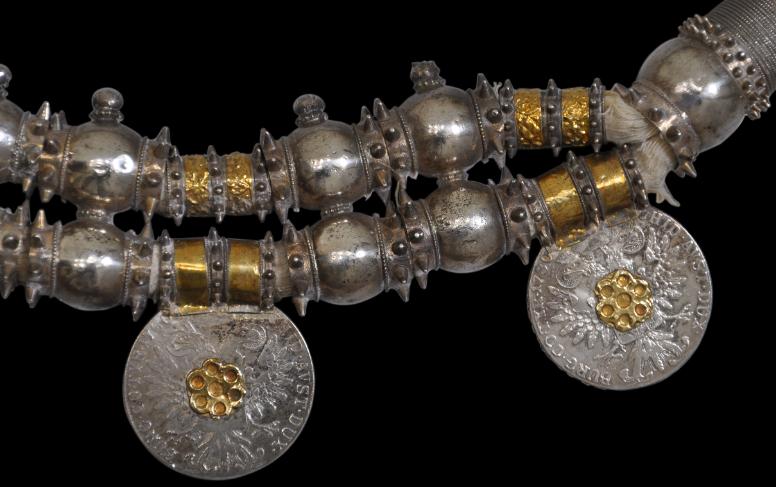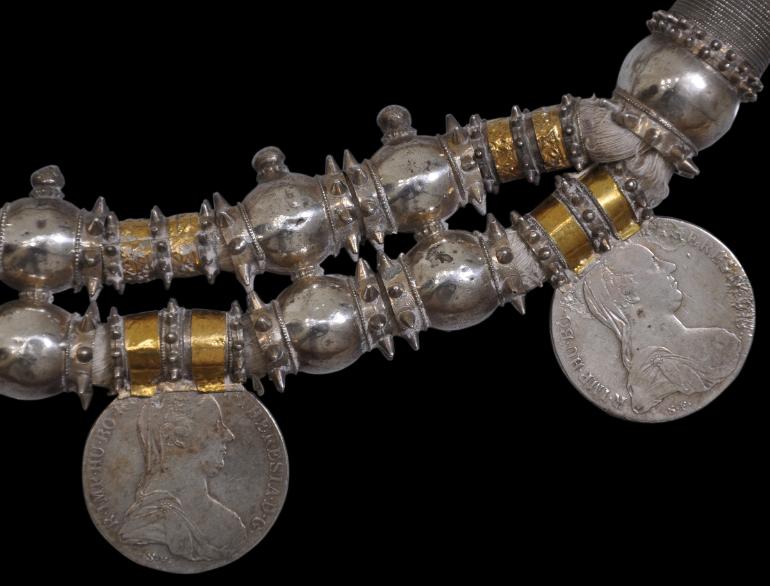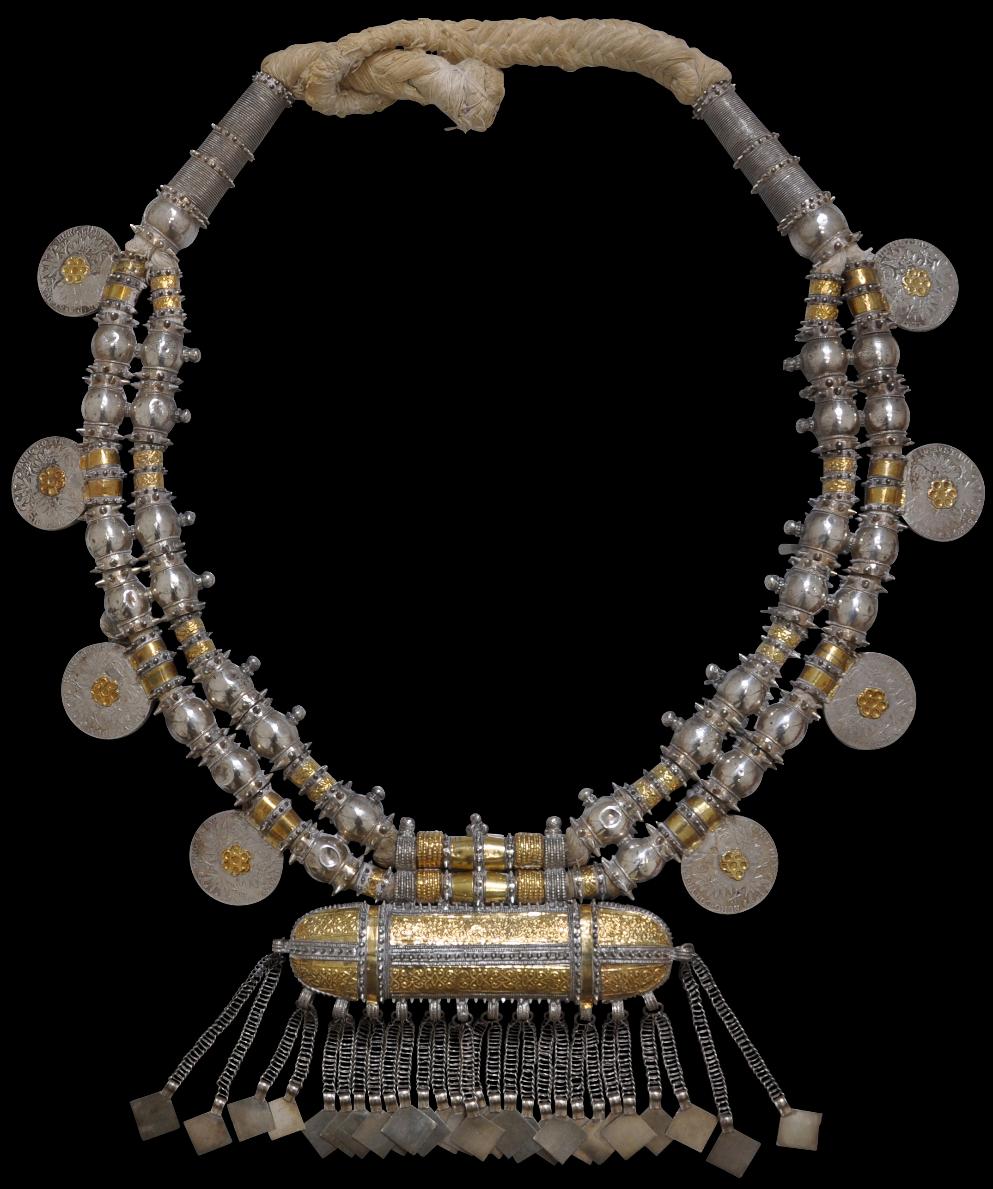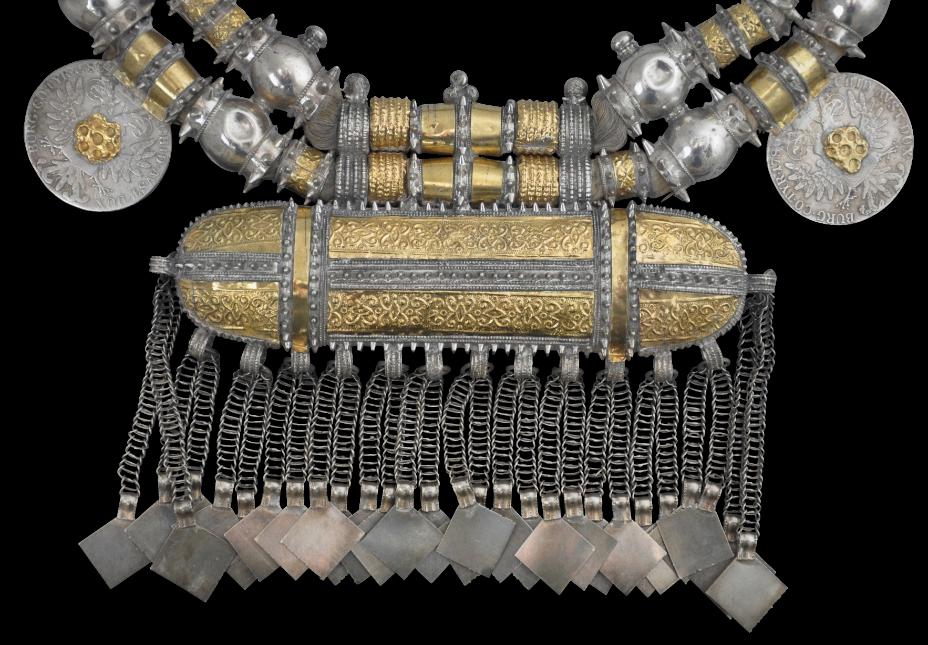
Massive & Superb Silver & Gold Necklace with Amulet Box (Hirz)
Massive & Superb Silver & Gold Necklace with Amulet Box (Hirz)
Oman, probably Nizwa
19th-early 20th century
length: 112cm, length of amulet box: 16.5cm, total weight: 932g
This spectacular Omani necklace of silver and gold is one of the finest examples of its type that we have seen. (A similar example is in Kuwait’s Tareq Rajab Museum – see Rajab, 1998, p. 42). It is large and weighs almost a kilogram.
It comprises a double strand of spiky, seed pod-like silver beads; gold-wrapped beads; eight silver Maria Theresa thaler coins decorated with applied gold; and a large silver amulet box decorated with gold sheet panels, with multiple chain tassels each of which finishes with a square-shaped pendant cut from sheet silver. The ends of the necklace are capped with long beads of wrapped silver wire, which are themselves superb examples of Omani jewellery work.
The fat, cigar-shaped amulet box or hirz would have contained some paper with Koranic verses or something similar.
Such a spectacular display of wealth would only have been worn at times of important festivities such as those association with marriage celebrations.
Each of the Maria Theresa thalers has been decorated with a central rosette in applied, high-grade gold.
Maria Theresa thalers have been struck in Austria since the reign of Empress Maria Theresa of the Austro-Hungarian Empire. The Empress died in 1780 and since that time, all thalers that were subsequently struck were minted with that date regardless of the actual year that they were produced. The coins achieved such a level of trust for their silver content (which is 83.3% silver) in the Middle East that neither the design not the date was varied, and so for more than 200 years the coins were used as an international currency among the tribes and the states of the Middle East, in much the same way as the Spanish dollar was used as an international currency at the time elsewhere. The thalers were used to complete most important transactions locally and were also given as dowries. They were also an important source of silver and were melted locally for jewellery.
The coins made their way to the ports of the Red Sea, Egypt and northern Africa from the ports of Genoa, Trieste, Livorno and Marseille. European traders used the coins to buy precious materials from the Gulf and northern Africa which it desired – commodities such as spices, coffee, gum Arabic, indigo, pearls, and tortoise shell.
The importance and the beauty of the coins saw them incorporated into local jewellery most particularly in Oman and Yemen.
The necklace here is in excellent condition. All the elements are threaded onto the original thick cotton twine substructure. The necklace is stable and wearable. It also has obvious age – there are minor, but expected and acceptable dents to some of the beads which are the product of age and use. Overall, it is a museum-quality piece in terms of its complexity, construction and condition.
References
Al-Jadir, S., Arab & Islamic Silver, Stacey International, 1981.
Harrigan, P., ‘Tales of a Thaler’, Saudi Aramco World, January/February 2003.
Hawley, R., Omani Silver, Longman, 1978.
Hawley, R., Silver: The Traditional Art of Oman, Stacey International, 2000.
Rajab, J.S., Silver Jewellery of Oman, Tareq Rajab Museum, 1998.
Ransom, M., Silver Treasures from the Land of Sheba: Regional Yemeni Jewelry, AUC Press, 2014.
Provenance
private collection, UK.
Inventory no.: 3997
SOLD

